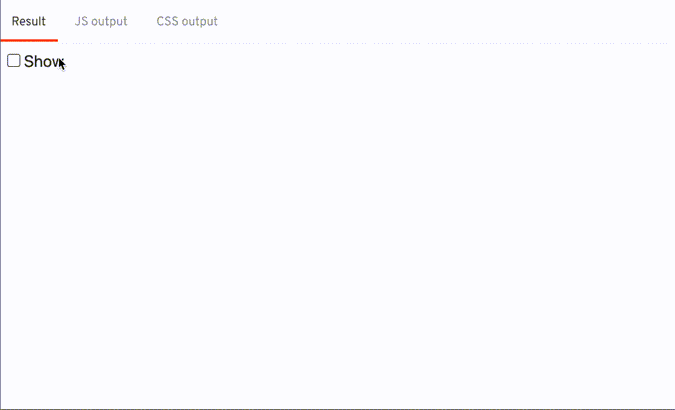The Result
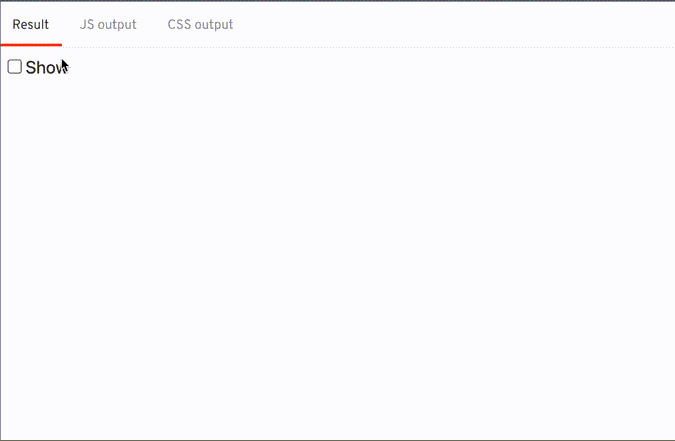
Break it down slowly
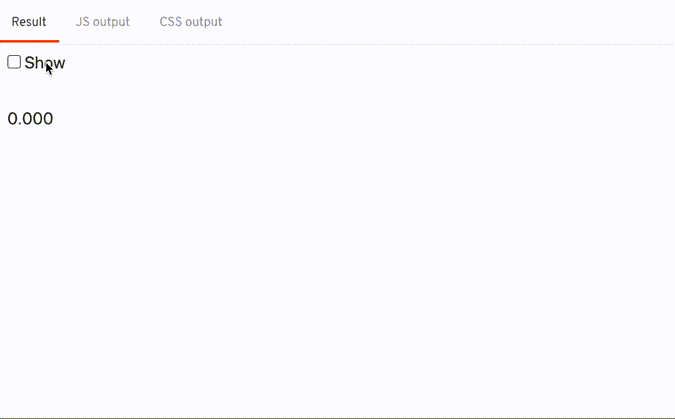
The transition can be broken down into 2 halves:
- 1️⃣ a solid color growing from the left covering the whole text area
- 2️⃣ as the solid color shrinks, it reveals the text
1. The first thing is to figure out the color of the text
function swipeColor(node, params) {
const { color } = window.getComputedStyle(node);
}2. I tried using linear-gradient to draw the background
- I use the value of
tto determine how wide the solid color should be
css(t) {
if (t > 0.5) {
// transform t from range [0.5, 1] into percentage [0, 100]
// t: 0.5 -> 1
// u: 0 -> 0.5
const u = t - 0.5;
// percentage: 0 -> 100
const percentage = u * 200;
return `background: linear-gradient(to right, transparent 0, ${percentage}%, ${color} ${percentage}%);`;
} else {
// transform t from range [0, 0.5] into percentage [0, 100]
// t: 0 -> 0.5
// percentage: 0 -> 100
const percentage = t * 200;
return `background: linear-gradient(to right, ${color} 0, ${percentage}%, transparent ${percentage}%);`;
}
},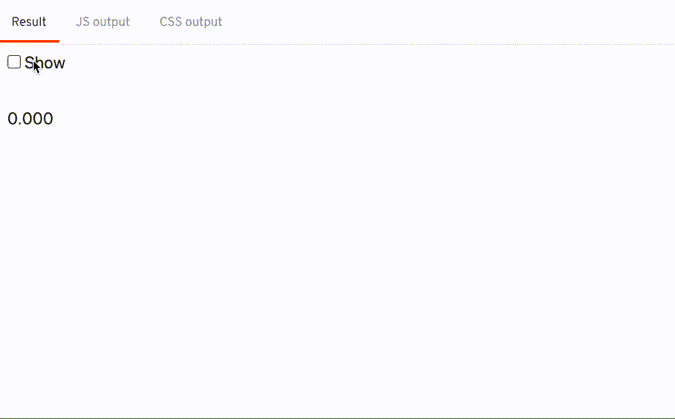
3. Next I need to hide / reveal the text at the right time
- I hid the text by setting the text color to transparent
css(t) {
if (t > 0.5) {
return `color: ${color}`;
} else {
return `color: transparent`;
}
}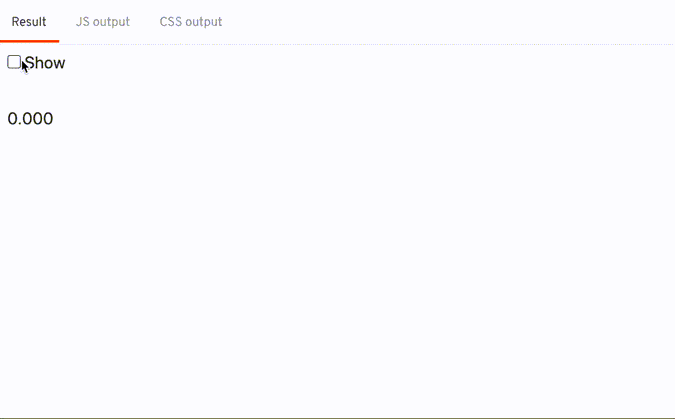
4. Combining the both 2. and 3. together
css(t) {
if (t > 0.5) {
// transform t from range [0.5, 1] into percentage [0, 100]
// t: 0.5 -> 1
// u: 0 -> 0.5
const u = t - 0.5;
// percentage: 0 -> 100
const percentage = u * 200;
return `
background: linear-gradient(to right, transparent 0, ${percentage}%, ${color} ${percentage}%);
color: ${color};
`;
} else {
// transform t from range [0, 0.5] into percentage [0, 100]
// t: 0 -> 0.5
// percentage: 0 -> 100
const percentage = t * 200;
return `
background: linear-gradient(to right, ${color} 0, ${percentage}%, transparent ${percentage}%);
color: transparent;
`;
}
},5. final touches, pass the duration, delay, and easing into the returned object
<script> function swipeColor(node, params) { const { duration, delay, easing } = params || {}; return { duration, delay, easing, css(t) { /* ... */ }, }; }</script>{#if show} <span transition:swipeColor>Hello world</span> <span transition:swipeColor={{ delay: 300 }}>Hello world</span>{/if}Final code
function swipeColor(node, params) {
const { duration, delay, easing } = params || {};
const { color } = window.getComputedStyle(node);
return {
duration,
delay,
easing,
css(t) {
if (t > 0.5) {
// transform t from range [0.5, 1] into percentage [0, 100]
// t: 0.5 -> 1
// u: 0 -> 0.5
const u = t - 0.5;
// percentage: 0 -> 100
const percentage = u * 200;
return `
background: linear-gradient(to right, transparent 0, ${percentage}%, ${color} ${percentage}%);
color: ${color};
`;
} else {
// transform t from range [0, 0.5] into percentage [0, 100]
// t: 0 -> 0.5
// percentage: 0 -> 100
const percentage = t * 200;
return `
background: linear-gradient(to right, ${color} 0, ${percentage}%, transparent ${percentage}%);
color: transparent;
`;
}
},
};
}Extra
Svelte has make writing custom transitions simple, with the code above, the transition itself is able to pause / reverse halfway through the transition
